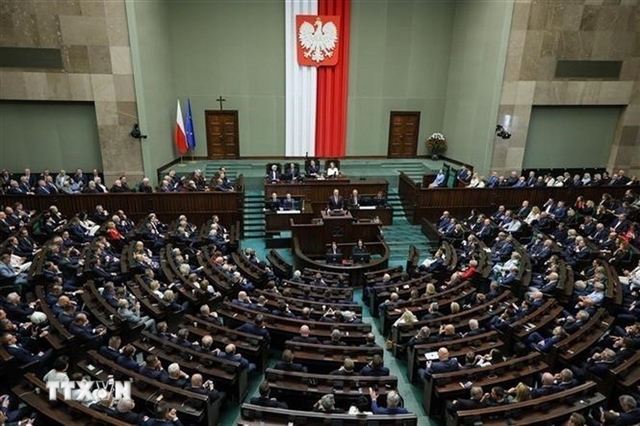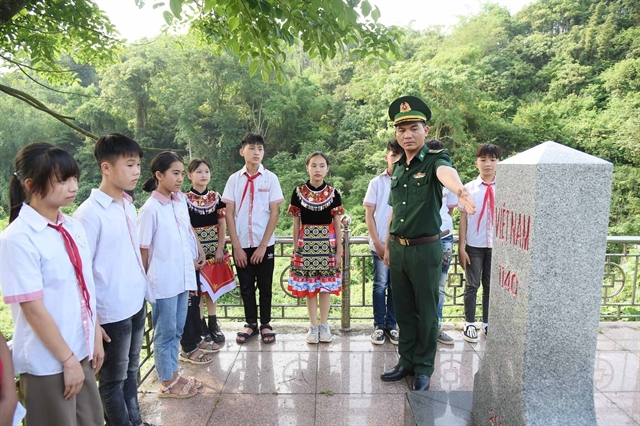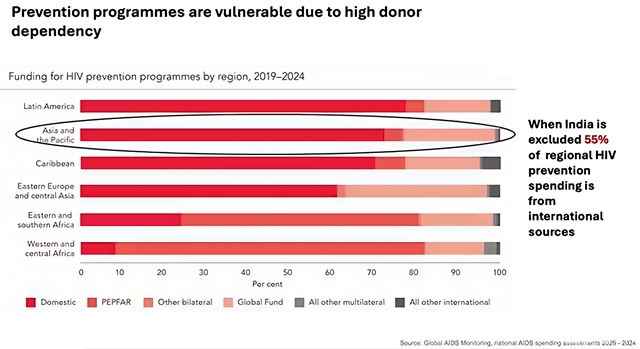 Life & Style
Life & Style

 |
| Tourists take photos at Bản Giốc Waterfalls in Cao Bằng Province. VNA/VNS Photos |
CAO BẰNG — Forty-six years after a battle to protect the northern border with China, Cao Bằng and Lạng Sơn, the two most severely damaged provinces, have revived and are now bustling with economic activities.
During the war while fighting for the northern border, Cao Bằng Province saw the destruction of all of its transportation infrastructure, including bridges, as well as factories and other significant construction works, including numerous Government buildings and residences.
Retired electricity official Nông Văn Bảo, 71, from Hợp Giang Ward in Cao Bằng City, recalled when the war broke out, all the residents in Cao Bằng Town, including his family, had to evacuate.
Everyone initially believed they would leave for a few days and then return -- but it took more than a month before they were allowed to come back home.
Tragically, the village was reduced to a heap of rubble, while the town's bridges were completely demolished. All of the offices, factories, projects and agency headquarters were in ruins.
The electricity industry lost a lot of money. Power lines, factories, machinery and hydroelectric facilities were all affected. Beautiful and spacious homes were also set on fire.
Many homes were abandoned, since many evacuees did not return for several years.
The already troubled Cao Bằng became even more so as a result of these massive economic losses. The restoration of Cao Bằng's factories, bridges and other construction projects took almost a decade.
In 1991, Việt Nam and China normalised relations and began their first steps towards economic cooperation and cultural exchange.
From 2000, trade began to take off, with the promotion of many cooperation programmes between Cao Bằng and Guangxi Province.
After Việt Nam and China completed border demarcation in 2008, economic cooperation and exchange between the two sides entered a period of acceleration.
Both sides have made investments to upgrade the border area's openings and gates. Along with economic cooperation, Cao Bằng and Guangxi also fostered cross-border cultural, educational, tourism and crime-fighting exchanges.
Phạm Văn Cao, director of the Cao Bằng Department of Foreign Affairs, said the province has a border of more than 333km adjacent to the Guangxi Zhuang Autonomous Region in China. Thanks to its geographical location, the province has a major advantage in promoting trade development.
In recent years, Cao Bằng had successfully expanded and solidified its cordial collaboration with the Guangxi Zhuang Autonomous Region in economics, trade, investment, tourism and education, he said.
He added that local authorities had directed people living close to the border to promote exchanges at all levels. Many border villages in two provinces had established a mechanism for contact and meetings.
Many localities have organised twinning at the district, commune and hamlet levels, according to Cao. Since 2015, Cao Bằng Province has signed 246 international documents and agreements with Chinese localities and partners.
Seventy-six investment projects have started at Cao Bằng's Border Gate Economic Zone thus far, comprising nine foreign investment projects valued at US$36.8 million and 67 local investment projects totalling approximately VNĐ14 trillion ($551 million) in registered investment capital. In 2024, the total import and export turnover from Cao Bằng to China hit over $900 million.
The two sides are promoting international road transport connections from China's southwestern provinces, including links between Chongqing, Sichuan, Guizhou and Baise in China and Cao Bằng, Lạng Sơn, Hà Nội and Hải Phòng in Việt Nam.
Cao Bằng and Guangxi have connected many tours and tourist routes. The Bản Giốc Waterfalls Scenic Zone and Detian, which has recently started operations, have become a model for tourism cooperation in the border area.
Since 2015, Cao Bằng has sent 152 officials, civil servants, public employees and students to study at universities in Guangxi under a scholarship programme.
As many as 260 officials, including Party members from provincial departments and organisations, have been sent to study at the Baise Cadre Academy.
The two sides also performed well in managing and protecting the border and border gates in accordance with the three legal documents on the Việt Nam - China land border and related agreements.
Witnessing history
Đồng Đăng, which has a 3.916km border with Pingxiang in Guangxi, China, was one of the locations where the northern border war broke out on February 17, 1979.
Home to Đồng Đăng International Station and Hữu Nghị International Border Gate, the town has an area of more than 459 hectares, divided into seven neighbourhoods. Đồng Đăng holds a strategic position in politics, economy, national defence and security for Lạng Sơn Province and the whole country.
There is still historical evidence of the battle at Đồng Đăng Fortress, which is situated up high in the Dây Thép region, Cao Lộc District. To hold this crucial position, the army and members of the Lạng Sơn ethnic groups fought fiercely and made many sacrifices.
The remnants of the 1979 conflict at the fortress are still mostly intact after almost fifty years. The fortress has evolved into a legend, representing the brave and unwavering spirit of the Lạng Sơn army and people during the invasion.
Vy Thị Bích Kỳ, born in 1964, whose house is about 100 metres from the fortress, said: “I joined the Đồng Đăng Fortress protection management team with the desire to contribute to preserving this national historical relic in memory of the heroic martyrs and people of Đồng Đăng who bravely fought and sacrificed here.”
Đồng Đăng Town has been progressively restored starting in 1989, ten years after the war. Infrastructure was funded and completed, making the area a desirable travel destination for both local and foreign visitors.
 |
| The Lạng Sơn Provincial Youth Union organised a 'Border Lesson' for Đồng Đăng Town Secondary School students at Milestone 1114/2. |
Chairman of Đồng Đăng Town People's Committee Sái Vĩnh Chung said with such a favourable location on the border, the area is home to key traffic routes such as the Hà Nội-Lạng Sơn Railway and National Highways 1A, 1B and 4A.
The area now has three important projects passing through it: the Hữu Nghị - Chi Lăng Border Gate Expressway, expected to open this year; a project to expand a specialised freight transport route at milestones 1119-1120 of Hữu Nghị International Border Gate; and a project to renovate Đồng Đăng International Railway Station.
These projects, when completed and put into operation, will open up development opportunities and breakthroughs for the locality, especially in the trade of goods and services.
Đồng Đăng Town also has the potential to develop its border tourism, border gate sightseeing, spiritual tourism and historical and cultural tourism with sites such as the Mother Temple and Đồng Đăng Fortress.
Thanks to taking advantage of central and local resources, Đồng Đăng Town has accelerated its economic and cultural development, and has remained stable in national defence and security. The town’s average income per capita has grown to about VNĐ50 million to 55 million per year.
According to estimates, more than 70,000 domestic and international visitors came to the town last year.
Entering the new era of the nation’s rise, the town has pledged to exploit its potential and advantages to develop trade, services and tourism as well as to attract more businesses in exports, processing and logistics.
Trade and services are projected to account for 90-91 per cent of the town’s economic structure this year. The locality will coordinate with related units to form destinations and tourist routes connecting historical and cultural relics and scenic spots in Đồng Đăng with other areas in Lạng Sơn Province. VNS




